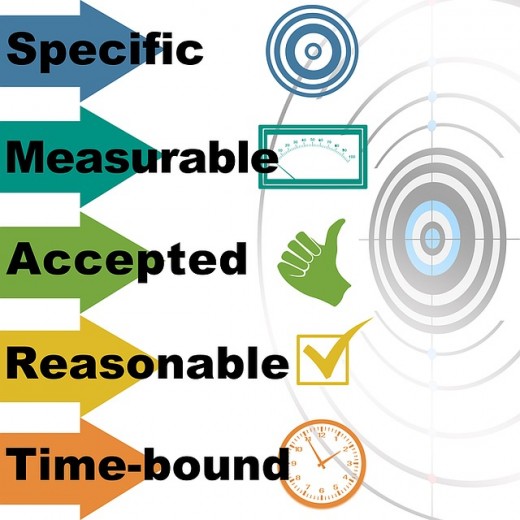Jira Software - Makes Your Scrum A Cakewalk
Today, companies have to radically revolutionize themselves every few years just to stay relevant. That's because technology and the Internet have transformed the business landscape forever. The fast-paced digital age has accelerated the need for companies to become agile.
- Nolan Bushnell

In today's competitive world, where organizations are competing with each other to obtain the bigger share of the market, it is who first launches the best-featured product, won the race. But it is not easy to develop and deliver the quality products within a short span of time when the requirements are keeps on changing at the drop of a hat. So, to seize the bigger share of the pie the organizations are trying hard to break their age-old traditions by adapting those processes which allow them to drive the business faster and safer.
These days, every organization is adapting themselves to meet the market demands by welcoming the changes at any stages of product development. When it requires to add or modify the requirements at the later stages of the project it should be acceptable to build an appealing product for the consumers, to stay ahead of the competitors.
That is where the Agile process comes into the picture to meet all the needs and provides the organizations an equal opportunity to stands tall in this era of challenging business.

What is Jira Software
There are many popular Agile frameworks such as Scrum, Kanban, and other, when follows strictly in a project the desired benefit can be achieved. But while adapting any of these complex frameworks, it is quite unfair to completely depend on the human rationalizing without taking the help of any professional tool.
So. to suffice the need of the hour, a popular agile project management tool called "JIRA Software" evolved over the time to swiftly manage all your Agile projects with minimal efforts.
JIRA Software is one of the best software development tool popularly used by many Agile teams. A single tool to fulfill all your needs at one place, instead of using individual tools for planning, managing, tracking, and reporting activities. It supports multiple agile frameworks such as Scrum, Kanban or any other framework you might have created by your own unique flavor.
This popular tool is developed by an Australian company called 'Atlassian'. Initially, it was just Atlassian Jira, which is a popular tool for tracking and reporting the issues. Later the Jira Software is developed by Atlassian team for project management functions. Since then this amazing tool is being used by many Agile teams across the industries to manage their Agile projects. The word Jira is not an acronym, it was actually taken from the Japanese name "Gojira" which means Godzilla.
Moving on, let's discuss how Jira Software helps you to plan, track and manage your sprint by adhering the popular Agile-Scrum framework.

Jira Software for Scrum
Scrum is an Agile methodology to build and deliver the high-quality product in a series of fixed length iterations. Each of that fixed length time boxes is called Sprint. The team commits to developing and deliver a potentially shippable product at the end of the every sprint.
There are four major processes required to follow in a Sprint, they are:
- Sprint Planning Meeting
- Daily Stand-up Meeting
- Sprint Review Meeting
- Sprint Retrospective Meeting
Jira Software has the set of agile tools that help the scrum team to execute all these processes effectively without any difficulties.
Let's check out how to perform these important rituals of Scrum using Jira Software tool.

Sprint Planning with Jira Software Tool
Sprint Planning Meetings is to select the high priority work items from the Product Backlog to work in the coming sprint. Jira Software provides you the well-organized Product Backlog to estimate the user stories, re-prioritize the work items in real-time, create new stories by breaking the high-level requirements and much more. There are many tools within the Jira Software to swiftly manage your sprint planning.
Scrum board
Scrum board is the place where you can view all the work items of the current sprint. The progress of each story can be easily tracked from here. The best thing is that you can comfortably customize the workflow as per your project needs. You can categorize the work items as per their characteristics whether it is an Epic item or a task. No need to perform any lengthy steps, only drag and drop can move the issues to its required place. With few clicks, any of the team members can see the issues assigned to them, as well as they can add other's issues to the watchlist to get an alert whenever any changes happened.

Managing Sprints with Jira Software
In Scrum framework, a sprint is a fixed-length time box within which the committed work items should be developed and delivered to the customer.
Ideally, the length of the sprint should be two to three weeks. Considering the short duration, it is quite worrisome to manage the progress of each story without the help of any professional tool. That is where the Jira Software tool assists you to track and manage all the work items of the sprint effortlessly allowing your team to stay focused in their work.
Let's check out some of those awesome features of Jira Software that you can practice in your Agile projects for tracking and managing the Sprint successfully.
Features of Jira Software
- Make your team member more autonomous and agile by granting the appropriate permissions. So that they can work independently with less supervision. At the same time, you can restrict unwanted interruptions of other users by controlling the user access.
- Customize the workflow of different work types such as stories, bugs, epics or tasks. You have the liberty to create your own terms to define the status of each work item like To Do, In Progress, Code Review, Done, Deployed etc.
- It is easy to track and plan for the upcoming releases just by looking at the Sprint Board. It quickly shows you how much work was done and what is left to do.
- Also, you can easily regulate your source code and issues, able to maintain the versioning of every sprint releases.
- No need to panic for missing code or broken builds. You can configure automatic warnings for issues with broken builds, missing code, or open pull requests. to make your life easy.

Daily Scrum Meetings Using Jira
Daily stand-ups meetings are to enhance the team communications, track the work progress, identify the risks and remove the impediments coming on the way. Another importance of this meeting is that it enhances visibility in the team as all the team members get the information on each other works and the current status of the entire sprint.
The Jira Software helps the team to quickly look into all the issues and the current status before going into the meeting. In this shorter meeting, which stands not more than 15 minutes, the team can quickly go through the sprint board to get the list of what has been done and what they will work next.
The team also leverage the other useful features of the tool, such as:
- To precisely find out the list of issues assigned to you in next 24 hours or more, just use the simple Jira Query Language and get the list in no time. Then go to your daily scrum with all those details.
- The Jira Dashboard provides you and the team a clear picture of the progress, enable you to keep a close tab on the bottlenecks.
Sprint Retrospective Meeting with Jira Software's Reports
For the Sprint Retrospective Meeting. the team introspect the work done in the just concluded sprint, collects all the feedback and identify the necessary improvements in the upcoming sprint. This is a standard lesson learned session for the improvement of the process, people, tools, and business relationships.
Using Jira Software you can generate many agile reports specific for scrum teams, which can make your Retrospective Meeting more data driven. You can highlight the low areas mentioned in the report to discuss and improve for the upcoming sprints.
Let's find out the various reports and their usefulness in Retrospective meetings as well as other important meetings of Scrum framework.
Reports of Jira Software
Type of Reports
| Brief Description
|
|---|---|
Burndown chart
| The Burndown chart picks the current data from the sprint to generates a graphical illustration for easily track the progress. It provides a clear view of the total work remaining. The vertical axis represents the amount of work remaining and the horizontal axis shows the sprints. It helps to adjust their work to achieve the sprint goal.
|
Epic report
| The Epic report helps the team to track the remaining incomplete or unestimated work. It shows the list of complete, incomplete, and unestimated work items in an epic.
|
Sprint report
| This is one of the important reports which is very handy in the Retrospective meeting. This report shows the number of work items completed or pushed back to the backlog in each sprint. That enable to ascertain whether the team is overcommitting or there is excessive scope creep.
|
Velocity chart
| This chart is more useful during Sprint Planning Meetings as it shows the amount of work completed from sprint to sprint. This allows you to determine the team's velocity and based on that you can plan the future sprints more realistically.
|
Epic burndown report
| This report shows the team's progress for an epic. It helps you to determine the number of sprints required to complete the epic so that you can plan the release accordingly. It also enables you to take proper action to get back the epic on track if it is falling behind.
|
Version report
| Similarly, the version report is to track the forecasted release date for a version. It helps to determine whether the version will release as planned and take actions if the work is falling behind.
|
Cumulative flow diagram
| You can get the number of issues in each status by looking into this cumulative flow diagram. By seeing the number of issues in each status. you can easily spot the blockages if any.
|
Control chart
| The Control chart shows the time taken by each issue in a particular status over a period of time. This helps to analyze the team's past performance in the Retrospective Meeting. This also allows you to identify whether data from the current process can be used to plan future performance.
|
Release burndown
| You can find out how your team is advancing the work for a release using this Release Burndown report. Though the Jira Software doesn't have any entity named as 'Release' but a 'Version' is equivalent to release. So, it helps you to monitor the release of a version.
|
Apart from the above features, you can also use many add-ons available in Atlassian marketplace. For example, you can easily integrate the test management tool -'Zephyr' with Jira Software to manage your test cases. You can also use 'Tempo Timesheets' for time tracking and reporting.
By integrating 'Confluence' you can easily convert a requirement from confluence into the backlog item of Jira Software. Another useful add-on is 'Bitbucket', the Sprint Board gets automatically updated whenever a developer commits code in Bitbucket.
Jira software is popular among the agile business because of its well-managed workflows and issue tracking abilities. It seamlessly manages works through the Scrum and Kanban boards along with various useful reports. We can say that it is a perfect tool to manage your agile project at one place with lots of features and add-ons.

Why do you think Jira Software is good for your team?
© 2017 Kishor Mohanty






